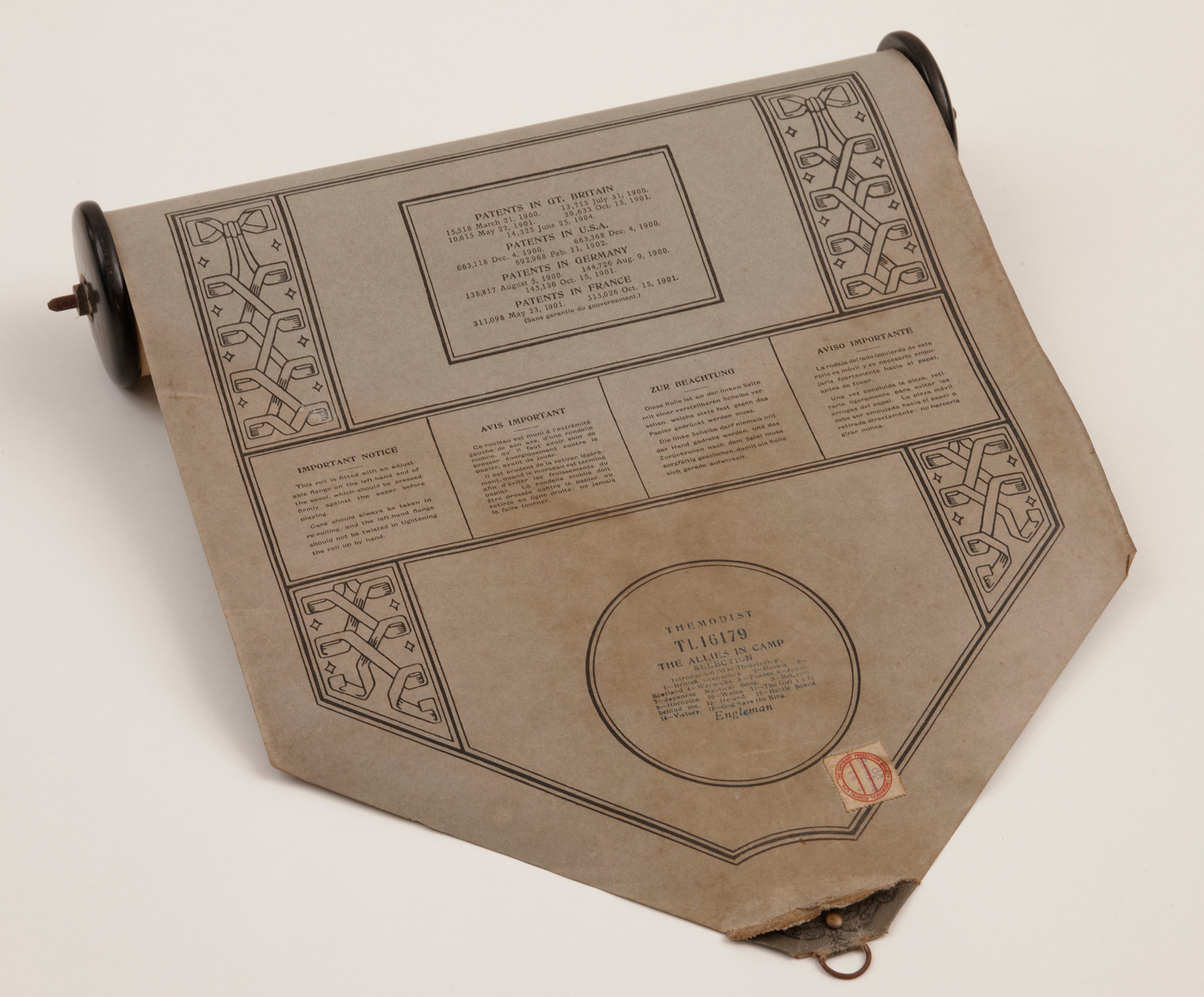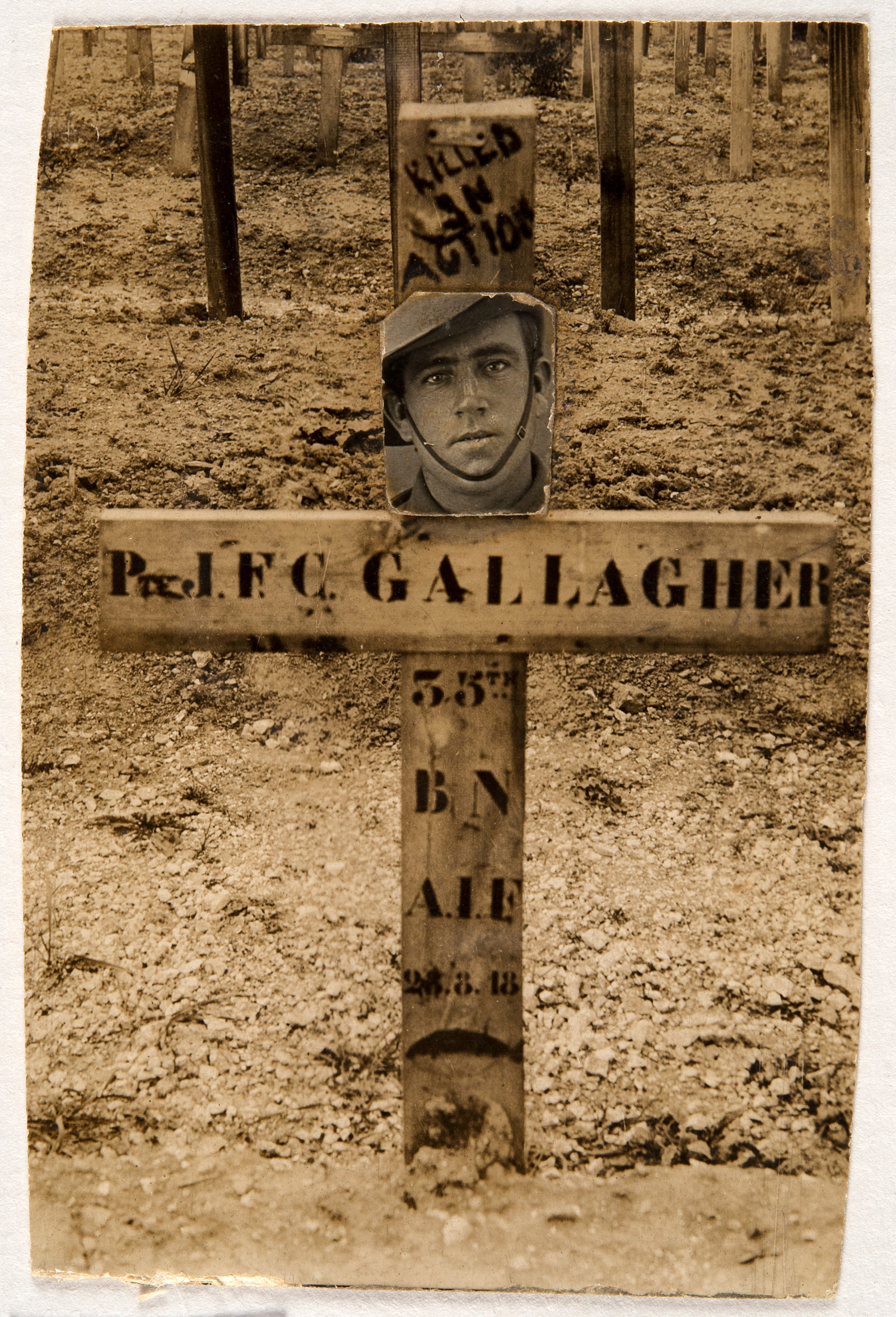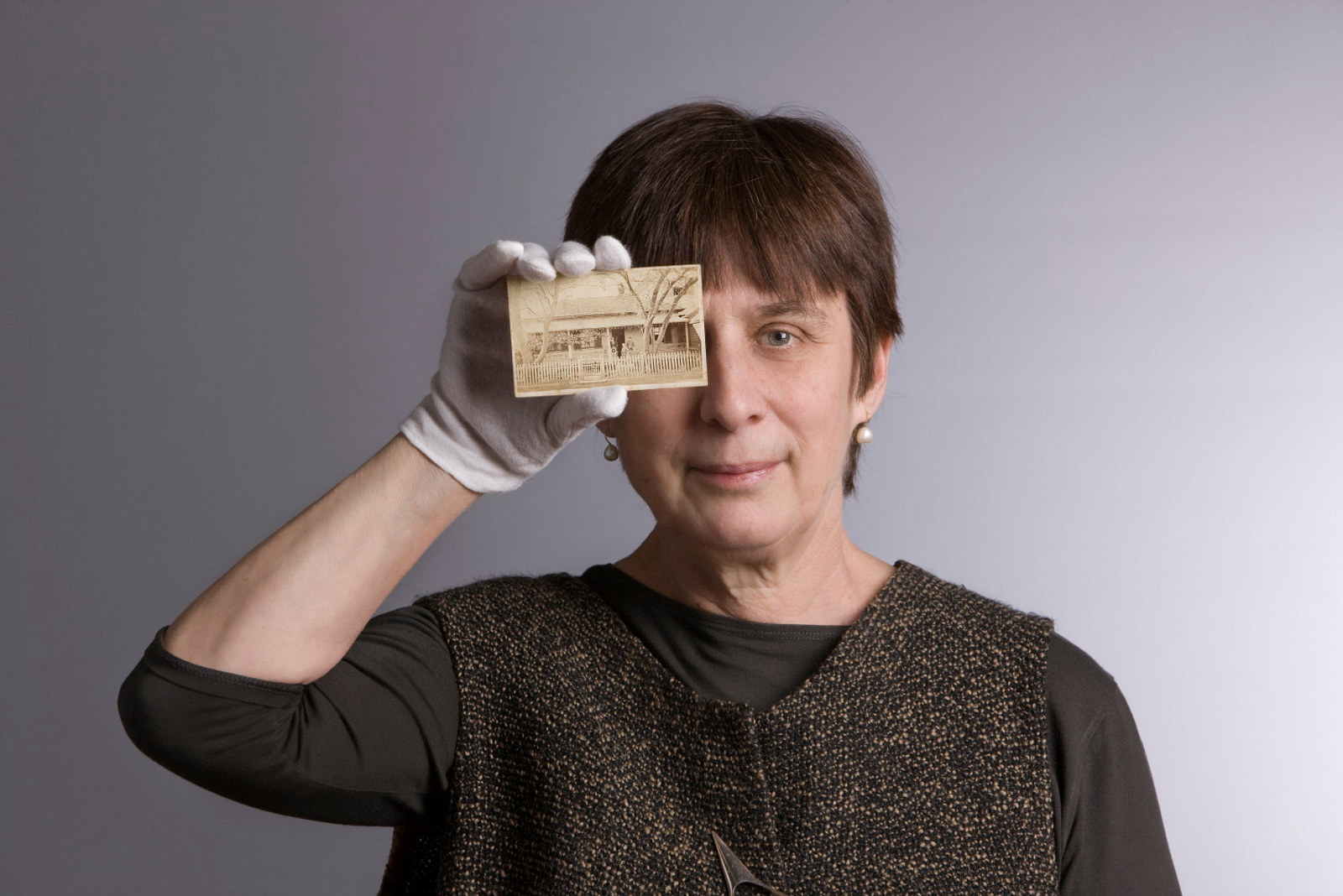A patriotic fundraising memento
This tiny celluloid doll, just 10 centimetres in height and clothed in panels of ribbon, is showing her age.
She has a squashed head and a semi-detached arm. Her ribbons are crushed and disintegrating. But, nearly a century old, she is a remarkable survivor, a glimpse of one woman’s activity on the home front during World War I. Down the length of her costume she carries badges and pins bought and worn at a succession of patriotic fundraising campaigns held in the final years of the war: the YMCA’s Red Triangle Day, 1 June 1917; France’s Day, 14 July 1917; War Chest Day, 28 September 1917; Australian Red Cross Day, 26 April 1918; Violet Day, 14 June 1918; Italian Red Cross Day, 28 June 1918; A.I.F. Memorial Day, 2 August 1918; Soldiers’ Dependents’ Day, 11 October 1918; Jack’s Day, 1 November 1918; War Chest Day, 29 November 1918.
There are tin badges and enamelled gilt lapel pins, including one made by the long-established Sydney medal-making firm Amor Ltd, and others made by Sydney jewellers Angus & Coote. There is a plastic United States flag produced by Standard Cigarettes and there is an example of ‘sweetheart jewellery’, a small brooch combining a silvered bullet with a dove carrying a blue enamelled peace banner. Most significantly, there is an Australian Red Cross branch membership brooch. It belonged to Dora Walford, the young woman who dressed and decorated the tiny doll. Dora was 22 and newly married when she acquired her souvenirs of Red Triangle Day in June 1917, but as Miss Dora Alexander she had been an active member of the Red Cross since 1915. She was one of a group of Sydney society’s ‘bright young things’ who regularly took to the stage in variety entertainments and musical revues organised to raise funds for Red Cross causes.
Dora continued to take part in musical sketches into the early years of her marriage. In the run-up to France’s Day 1917, she and her sister Carla Dibbs performed a song-and-dance duet in a patriotic matinee held at Sydney’s Tivoli Theatre. On the eve of France’s Day, they attended a ‘café chantant’ (literally, a ‘singing cafe’, usually an establishment where music was performed) held in the Winter Garden of the Hotel Australia, Sydney’s most prestigious hotel. For Italian Red Cross Day in 1918, Dora appeared in a matinee at the Palace Theatre, taking the part of the Madonna in a tableau vivant.
In all of her amateur performances for patriotic causes, Dora was part of Sydney society at play, but her connection to the grim business of war was not at all theatrical. Her brother Norman Alexander joined the 1st Australian Light Horse Regiment on 1 September 1914 and served at Gallipoli. Her brother-in-law Captain Owen Dibbs was killed in action in France on 1 April 1918.
Published on
More

On This Day
17 Dec 1915 - 'Waratah' recruitment march
On 17 December 1915 the "Waratah" recruitment march arrived in Sydney

WW1
The Allies in camp music roll
Rouse Hill house boasts a fine pianola, a player piano, which came into the house just a few years before the outbreak of World War I

WW1
Frank Gallagher’s grave markers
Late in the afternoon on 23 August 1918, Private John Francis Cecil Gallagher, known as Frank, was killed by shellfire at 23 years of age
